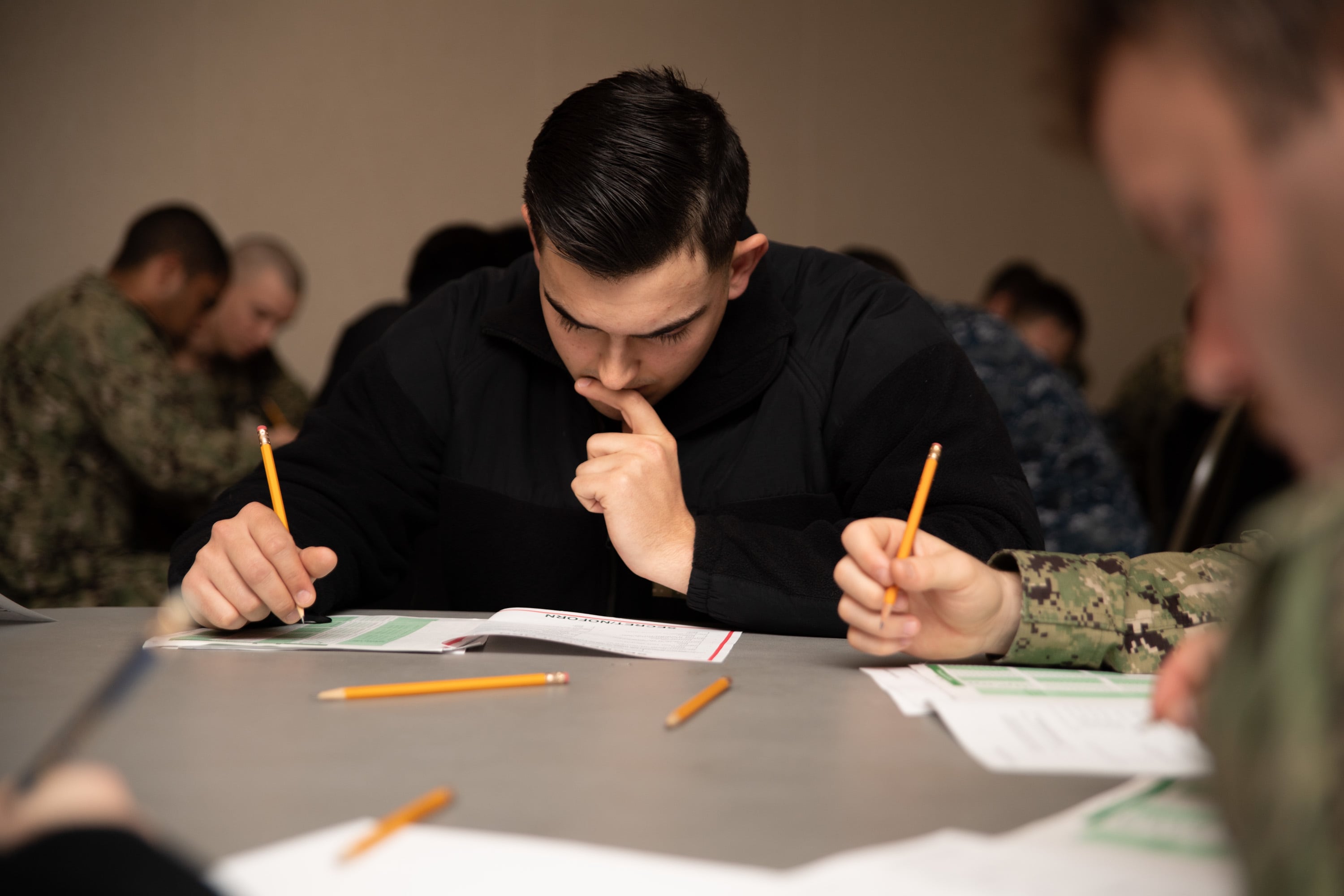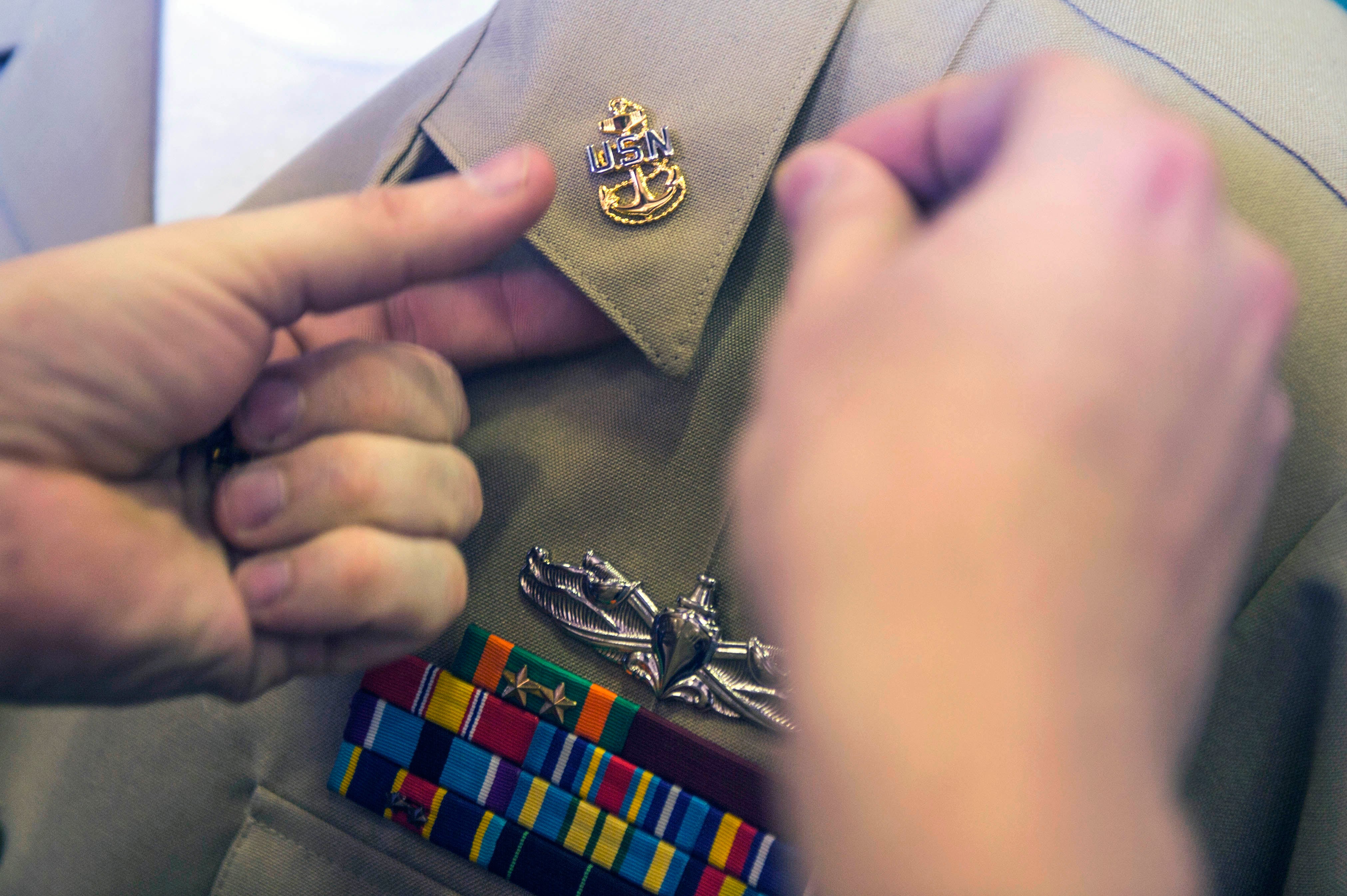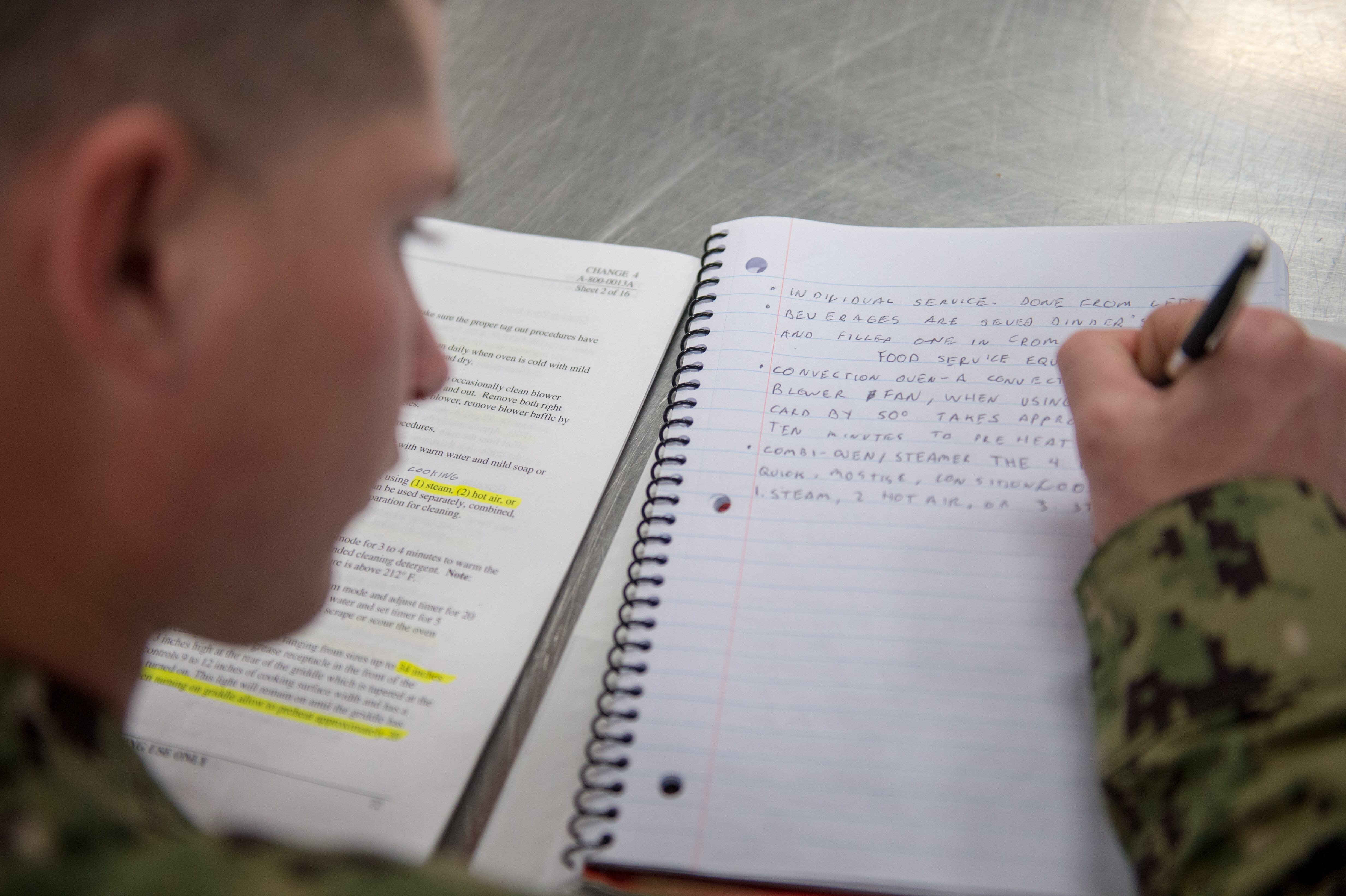For the third consecutive advancement cycle, your chances to enter the ranks of petty officers — or move up within them — shrank.
The Navy said that 88,293 sailors passed their exams in February and March but the sea service produced only 18,052 quotas. That means a sailor’s chance to get ahead fell to roughly 20 percent, four percent below last year’s advancement rate.
For active-duty petty officers, the chance to move up dropped to 19 percent, down from last cycle’s 23.5 percent. Records indicate that 78,667 sailors passed their exams but they were vying for only 15,010 quotas across all pay grades.
But Navy officials insist it’s not as bleak as the data suggest because the Meritorious Advancement Program boosted 5,216 active-duty sailors during this cycle.

For the 17,066 sailors competing for 5,594 petty officer third class quotas, the advancement rate fell from 38 percent last cycle to 33 percent
Check out the advancement opportunities for your rating here.
The advancement rate for active-duty sailors to petty officer second class fell to 18 percent, down from 24 percent during the previous cycle.
Navy records show that 35,538 qualified sailors were competing for only 6,399 quotas.
Check out the advancement opportunities for your rating here.
The advancement rate for sailors hoping to move from second to first class petty officer also dropped to 14 percent, two points lower than the last cycle.
Navy officials indicated that 26,063 qualified sailors were vying for 3,017 quotas.
Check out the advancement opportunities for your rating here.
Full-Time Support
The advancement rate for reserve full-time support sailors remained sluggish at 26 percent, the same odds for moving up sailors faced during the fall cycle.
Navy records indicate that 1,958 sailors were competing to fill 515 FTS petty officer quotas.
Officials noted, however, that another 116 sailors across all FTS petty officer pay grades were elevated through MAP and other programs.
During this cycle, 214 sailors were competing for 159 petty officer third class slots. That meant a 74 percent chance to move up, one point lower than the previous cycle.
Check out the advancement opportunities for your rating here.
The news was rosier for FTS sailors trying to reach petty officer second class. The advancement rate skyrocketed to 34 percent, up from 18 percent during the previous cycle.
The Navy recorded 665 third class petty officers competing for 227 E-5 quotas.
Check out the advancement opportunities for your rating here.
The advancement rate for FTS sailors trying to reach petty officer first class edged up to 12 percent, up nearly 1 percent. The Navy recorded 1,079 sailors competing for 129 quotas.
Check out the advancement opportunities for your rating here.
RELATED

Selected Reserve
Roughly one out of every three drilling reservists will advance, a rate that remained stagnant from the previous cycle.
While 7,668 sailors passed their exams, they were competing for only 2,527 quotas.
The advancement rate to petty officer third class rose to 79 percent, up 10 points from the previous cycle, because only 885 sailors were vying for 703 quotas.
Check out the advancement opportunities for your rating here.
The advancement rate to petty officer second class inched down from 36.8 percent last cycle to 36.4 percent.
That’s still slightly higher than the five-year average advancement rate of 34 percent, officials said.
The Navy indicated that 2,893 third class petty officers were competing for 1,054 quotas.
Check out the advancement opportunities for your rating here.

The advancement rate to petty officer first class fell to 20 percent, down two points from the previous cycle.
The Navy recorded 3,890 sailors who passed the tests but they were competing for only 770 quotas.
Officials said that the advancement rate is still better than the five-year average of 19 percent.
Check out the advancement opportunities for your rating here.
Mark D. Faram is a former reporter for Navy Times. He was a senior writer covering personnel, cultural and historical issues. A nine-year active duty Navy veteran, Faram served from 1978 to 1987 as a Navy Diver and photographer.
